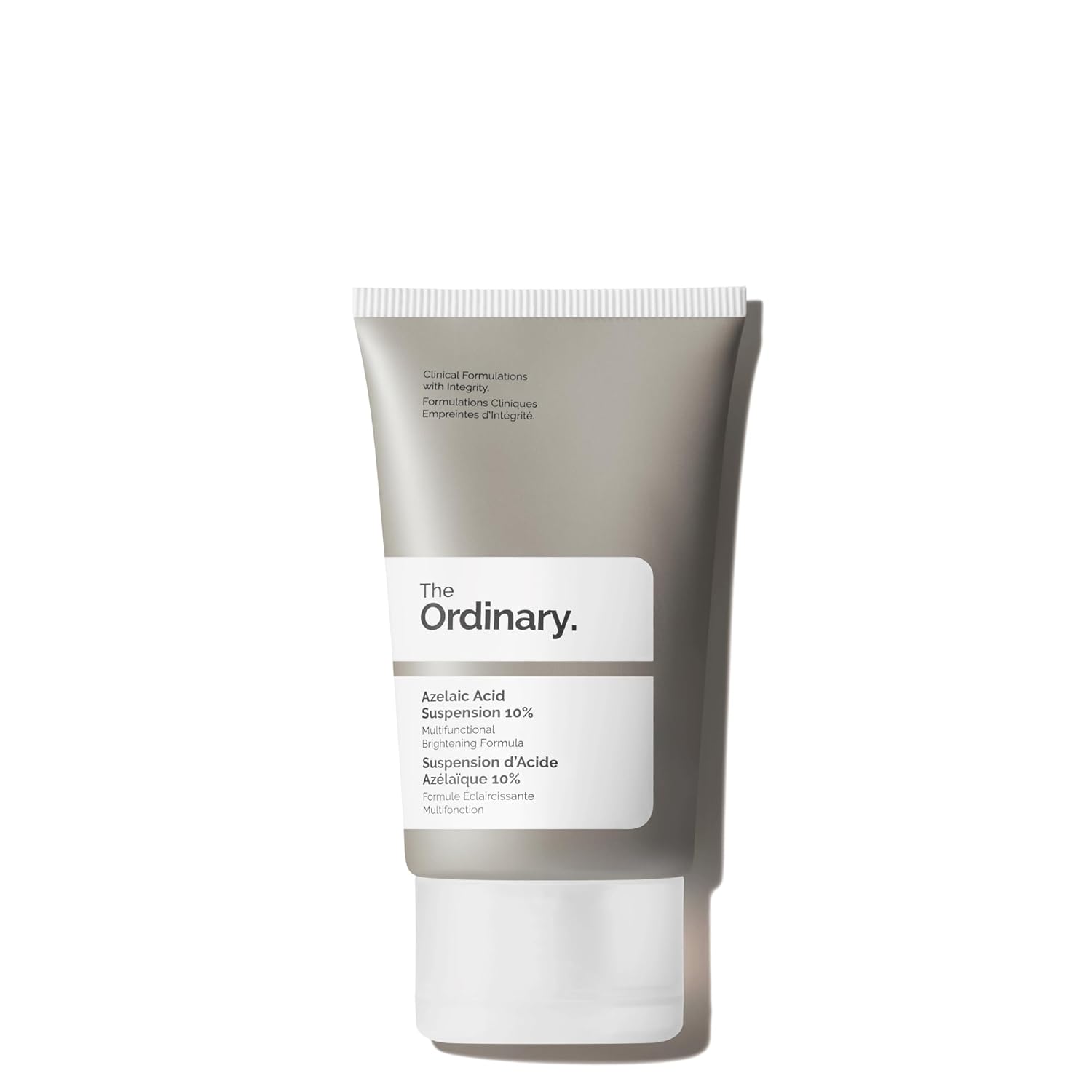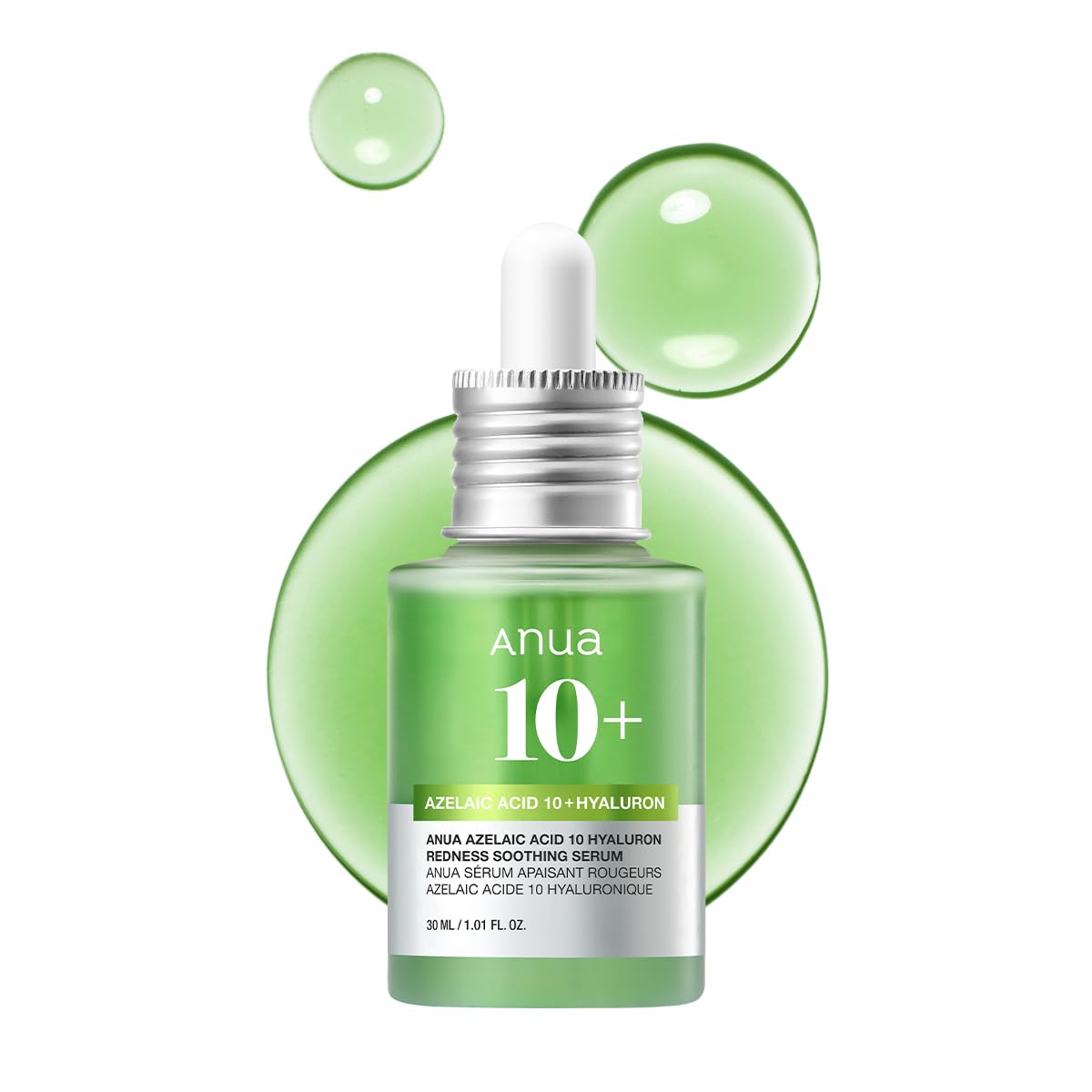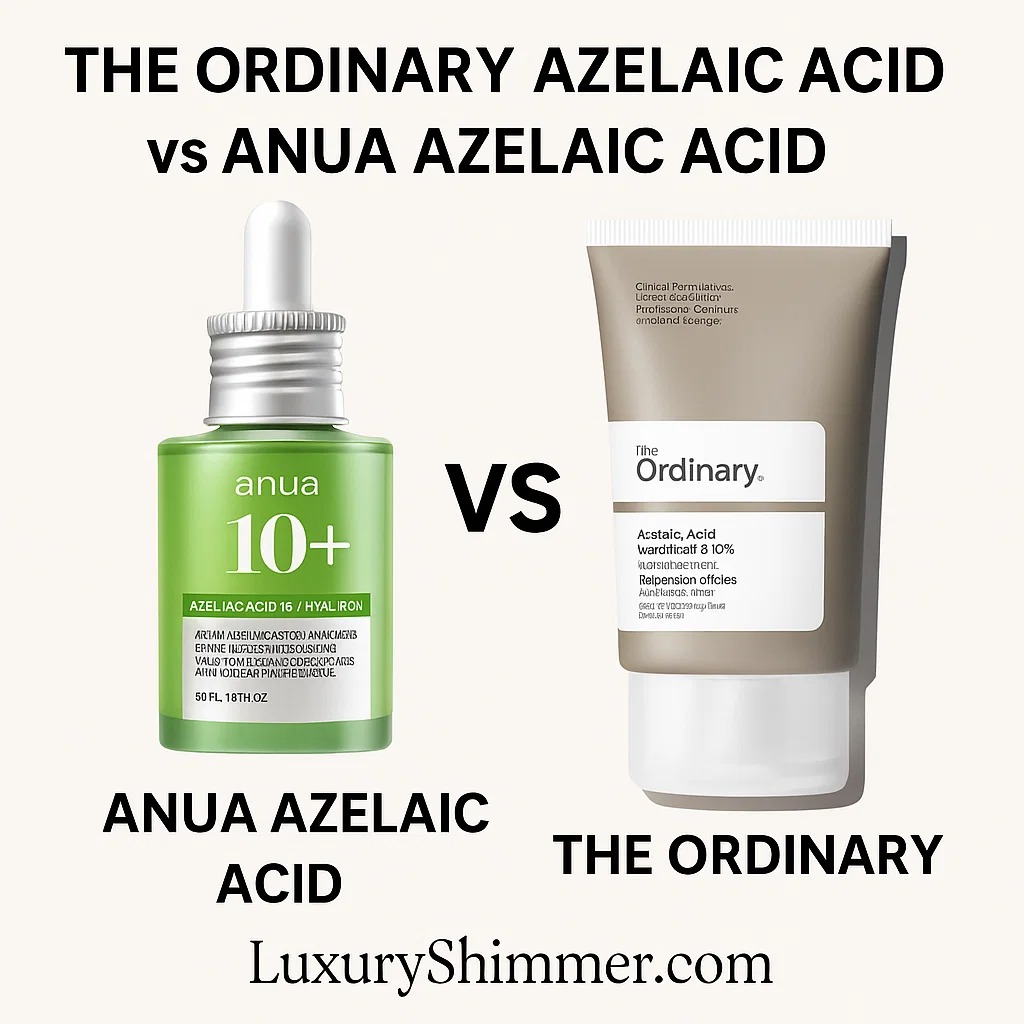I'm a participant in the Amazon Services LLC Associates Program, an affiliate advertising program designed to provide a means for me to earn fees by linking to Amazon.com and affiliated sites.
If you’ve been scrolling TikTok or beauty forums lately, you’ve probably seen the debate: The Ordinary Azelaic Acid Suspension 10% vs Anua Azelaic Acid 10 Hyaluron Serum. Both promise brighter, calmer skin — but which actually delivers? Our The Ordinary Azelaic Acid vs Anua Azelaic Acid review is going to help settle the debate.
Here’s the quick take: if you want a straight-up, affordable formula that gets the job done, choose The Ordinary. If your skin tends to get irritated or you crave hydration alongside your active, Anua is the gentler, more luxurious-feeling option.
Why does this matter? Because the way a product feels — gritty vs silky, simple vs soothing — often decides whether you’ll stick with it long enough to see results.
The Ordinary Azelaic Acid vs Anua Azelaic Acid: Comparison Table
| Feature | The Ordinary Azelaic Acid | Anua Azelaic Acid |
|---|---|---|
 |  | |
| Best for | Budget skincare lovers | Sensitive / redness-prone skin |
| Formula | 10% azelaic acid suspension | 10% azelaic acid + hyaluronic acid + calming botanicals |
| Texture | Creamy, slightly gritty | Lightweight, watery serum |
| Irritation Risk | Higher (minimal support ingredients) | Lower (hydration + soothing built-in) |
| Daily Use Comfort | Functional but not luxurious | Hydrating, comfortable, easy to layer |
| Price |
The Ordinary Azelaic Acid vs Anua Azelaic Acid: Design & Usability
The Ordinary: Think no-frills, clinical minimalism. The suspension has a slightly thick, almost “sandy” feel thanks to its silicone base. Some people don’t mind it, others find it a dealbreaker.
Anua: More of a fluid, watery serum that melts into skin. With hyaluronic acid and calming extracts, it feels like a treatment-serum hybrid — lightweight, hydrating, and instantly wearable under makeup.
👉 Verdict: If texture matters to you (and let’s be honest, it always does), Anua is far more pleasant. But if you don’t mind a little grit in exchange for a lower price, The Ordinary still holds its ground.
Anua Azelaic Acid vs The Ordinary Azelaic Acid: Performance & Features
The Ordinary: Ten percent azelaic acid on its own is already impressive. It’s clinically recognized for fading post-acne marks, calming redness, and evening tone. The formula is lean, which means potency — but also means you’ll need to layer on your own hydrating or soothing products.
Anua: Same 10% azelaic acid, but dressed up with hyaluronic acid and botanical soothers (like cica and aloe). This makes it easier to tolerate for sensitive or redness-prone skin, and for many, that means better consistency — you’ll actually use it daily.
👉 Verdict: Both can brighten and refine skin, but Anua offers a “softer landing,” while The Ordinary plays the role of the efficient workhorse.
Ease of Maintenance & Longevity
The Ordinary: The tube is simple and practical, and the price means repurchasing doesn’t sting. The downside? Some people drop it because of the texture or pilling when layered with heavier products.
Anua: The serum format feels more like skincare you want to use every day. The extra hydration means you won’t need as many companion products, and it’s easier to stick with long term.
👉 Verdict: If skincare is a ritual you enjoy, Anua fits seamlessly. If skincare is more of a budget-and-results equation, The Ordinary wins.
Pros and Cons
The Ordinary Azelaic Acid Suspension 10%
Pros
- Budget-friendly
- Potent 10% azelaic acid
- Minimalist, fragrance-free
Cons
- Gritty texture not for everyone
- Can pill with certain products
- No soothing extras, so hydration is on you
Anua Azelaic Acid 10 Hyaluron Serum
Pros
- Lightweight, watery texture
- Built-in hydration + calming botanicals
- Designed for sensitive skin
Cons
- Pricier than The Ordinary
- More ingredients = higher chance of individual sensitivities
- Less track record in Western markets
| Feature | The Ordinary Azelaic Acid | Anua Azelaic Acid |
|---|---|---|
 |  | |
| Best for | Budget skincare lovers | Sensitive / redness-prone skin |
| Formula | 10% azelaic acid suspension | 10% azelaic acid + hyaluronic acid + calming botanicals |
| Texture | Creamy, slightly gritty | Lightweight, watery serum |
| Irritation Risk | Higher (minimal support ingredients) | Lower (hydration + soothing built-in) |
| Daily Use Comfort | Functional but not luxurious | Hydrating, comfortable, easy to layer |
| Price |
Major Differences
What really separates these two isn’t the azelaic acid (they both have 10%) — it’s the experience.
- Texture: The Ordinary is thicker and can feel gritty; Anua is smooth and silky.
- Formula Philosophy: The Ordinary keeps it stripped down; Anua layers in hydration and soothing.
- Skin Type Fit: The Ordinary suits those who tolerate actives easily and like to keep routines flexible. Anua suits anyone with redness, dryness, or irritation issues.
Think of it this way: The Ordinary is like a reliable plain tee — practical, affordable, and versatile. Anua is more like a soft cashmere sweater — cozy, comforting, and a little indulgent.
FAQs
Is azelaic acid safe to use every day?
Yes. Start once a day and, if your skin tolerates it, you can build up to twice daily.
Which works faster on dark spots?
Both contain the same concentration, so results depend more on consistency. If texture stops you from using The Ordinary regularly, Anua may give you faster results simply because you’ll use it more.
Can I use these with retinol or exfoliating acids?
Yes, but alternate nights are safest. Layering too many actives can cause irritation.
Which is better for rosacea?
Anua is the gentler option for redness and sensitivity. The Ordinary can still help, but introduce it more cautiously.
Bottom Line
If you’re building a simple, budget-friendly routine and don’t mind a utilitarian texture, The Ordinary Azelaic Acid Suspension 10% is a classic. But if you want hydration, comfort, and a more elegant formula, Anua Azelaic Acid Serum feels like a skincare upgrade you’ll actually look forward to using.
Other Interesting Articles
- OneSkin vs Medik8: Longevity Peptide or Retinal Powerhouse?
- OneSkin vs Augustinus Bader: Is Skin Longevity Better Than Stem Cells?
- OneSkin vs SkinCeuticals: Which Anti-Aging Brand Actually Works?
- OneSkin vs Alastin: Which Skincare Powerhouse Boosts Your Skincare Routine?
About the Author
LuxuryShimmer brings you expert skincare comparisons and honest product breakdowns. We cut through the hype to help you choose formulas that fit your skin, lifestyle, and budget.
